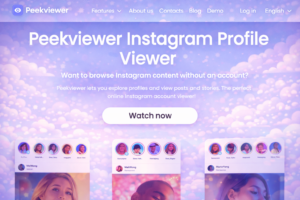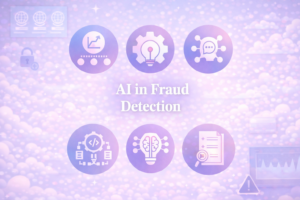Gone are the days when manual checks and visual inspections could reliably confirm the authenticity of documents.
With fraudsters deploying increasingly sophisticated tactics, businesses must evolve beyond outdated methods.
Modern document verification services, powered by OCR, AI, biometrics, and global compliance frameworks, offer an efficient and secure way to confirm identities and safeguard transactions.
For industries from banking to healthcare, digital verification has become not just a compliance requirement but a strategic necessity.
The Reason Why Document Verification Is Important
The risk of identity theft and fraud is also growing with the growth in online transactions.
Failure to have the right systems of verification may cause losses of money, fines imposed by regulators, and dire reputational losses to the businesses.
Verifying documents has some of the following primary advantages:
- Hedging organizations against fraud.
- Protecting the personal data and identities of customers.
- Adherence to the compliance requirements to prevent legal problems.
What Does a Document Verification Service Mean?
A document verification service is an online or hybrid service that helps companies to verify documents in a safe and efficient manner.
Verification Services Basic Characteristics.
- Optical Character Recognition (OCR): Recovery of data in scanned IDs.
- Artificial Intelligence Analysis: IDs fake and fake documents.
- Cross-Checks Biometric: Compares selfies or fingerprints to ID photos.
- Global Compliance Support: Compliance with the KYC, AML, and GDPR standards.
Electronic Document Verification vs. Paper
Manual checks involve the use of human agents to check documents, but digital services are automated with the help of AI and machine learning. Digital solutions are:
- Faster
- Scalable
- Less prone to human error
The Document Checking Process
Step 1: Document Collection
The user gives a passport, driver’s license, or any other government-issued ID through a secure portal.
Step 2: OCR Data Mining
OCR software reads and accesses the text, including name, date of birth, and ID number.
Step 3: Checks of Authenticity and Security.
The system authenticates the watermarks, holograms, and signs of tampering and cross-checks the information with credible sources.
The fourth step is Bio-metric matching (Optional).
There are services of scanning a selfie or a fingerprint, which will ensure that the document belongs to the actual user.
Checking of Documents: Responsibility of a Document Checker
Checkers of documents are an essential component of contemporary digital document verification.
These automated applications make sure that the documents of identity are authenticated expeditiously and safely.
Automated Verification
The document checkers rely on advanced technologies, and the IDs are checked in real-time.
With the help of the digital verification of documents, anomalies, forgeries, or fraud cases are identified in time, and organizations become less risky.
Human Control in Case of High-Risk
Although automation is used in performing the majority of the verification, human expertise is essential. In severe and complex situations, the flagged documents are reviewed by trained specialists to make sure that accuracy, compliance, and reliability are achieved.
Such automation and human intervention ensure that the process of digital document verification is both efficient and reliable, keeping businesses safe from fraud and ensuring that the process is done to high standards.
The industries that rely on document verification services are also referred to as industrial:
- Banking and Financial Services: Utilized in the onboarding phase to satisfy KYC and AML requirements.
- Medical and Insurance: Assists in avoiding fraud and checking the ID of patients.
- E-Commerce and Retail: This is used to safeguard high-value transactions and misuse.
- Government and Immigration: Guarantees the genuineness of the visas, passports, and residence permits.
Advantages of Document Checking
Fraud Prevention and Security: Prevents identity theft, forged papers, and forged applications.
- Greater Acceleration and productivity: Automated systems help to shorten waiting time and enhance customer satisfaction.
- Legal and Regulatory Compliance: Covers the companies against fines and penalties under international laws.
Difficulties in Document Verification
- Risks of Data Privacy and Security: Data privacy and security Sensitive personal data must be encrypted and processed by stringent privacy legislation.
- Adaptable Forgeries: Fraudsters are ever evolving, so they demand sophisticated AI and machine learning to keep up.
Future of Document Verification Services
With the growth of digital ecosystems and sophisticated fraud schemes, AI, machine learning, blockchain, and user-focused identity models are set to determine the future of document verification services.
The innovations will not only enhance the detection of fraud but also rebrand the process where businesses and people feel secure and trustful in the digital interactions.
The future of AI and machine learning is in fraud detection.
The use of artificial intelligence (AI) and machine learning (ML) will continue to be a transformative factor in the detection of fraud.
In comparison to the traditional systems of verification that use the previously established rules, AI-based solutions will be capable of learning with large amounts of data and identifying anomalies in real-time.
Future systems will:
- detect even minor anomalies in documents, including micro-alterations in font, image manipulation, or metadata inconsistencies.
- Keep up with the innovations of new fraudulent methods and adapt constantly to the new security threats.
- Provide predictive intelligence, enabling companies to evaluate the risk before fraudulent practices grow out of proportion.
- Reduce the number of false positives, which means that legitimate customers are provided with an uninterrupted onboarding and transaction process.
The AI-driven verification in the next generation will be more proactive than reactive, and it will provide a powerful defense barrier to more advanced cybercriminals.
Blockchain Identity Verification
Blockchain will bring trust, transparency, and empowerment to the users in document verification. Blockchain provides decentralized and immutable records of identity and verification, as opposed to the use of centralized databases prone to being hacked. The expected systems in the future will:
- Give people more control over their personal information, including who will access and utilize it.
- Make sure that after an identity or document is authenticated, the history should be non-editable and written only (this is because it is very difficult to forge).
- Assist the cross-border transactions, where they are able to have a universal standard of digital identity that can be trusted by governments, businesses, and consumers.
- Eliminate administrative waste by enhancing the processes in the finance, healthcare, e-commerce, and public service industries.
Conclusion
Document verification services are a necessity in the era of fraud, which is becoming a major issue of concern. Companies are able to safely check documents through OCR, AI, biometric checks, and automated document verifiers, without breaking the law.
With the development of AI and blockchain, document verification will be more precise, efficient, and secure, providing businesses with the means by which to develop trust in the digital world.








